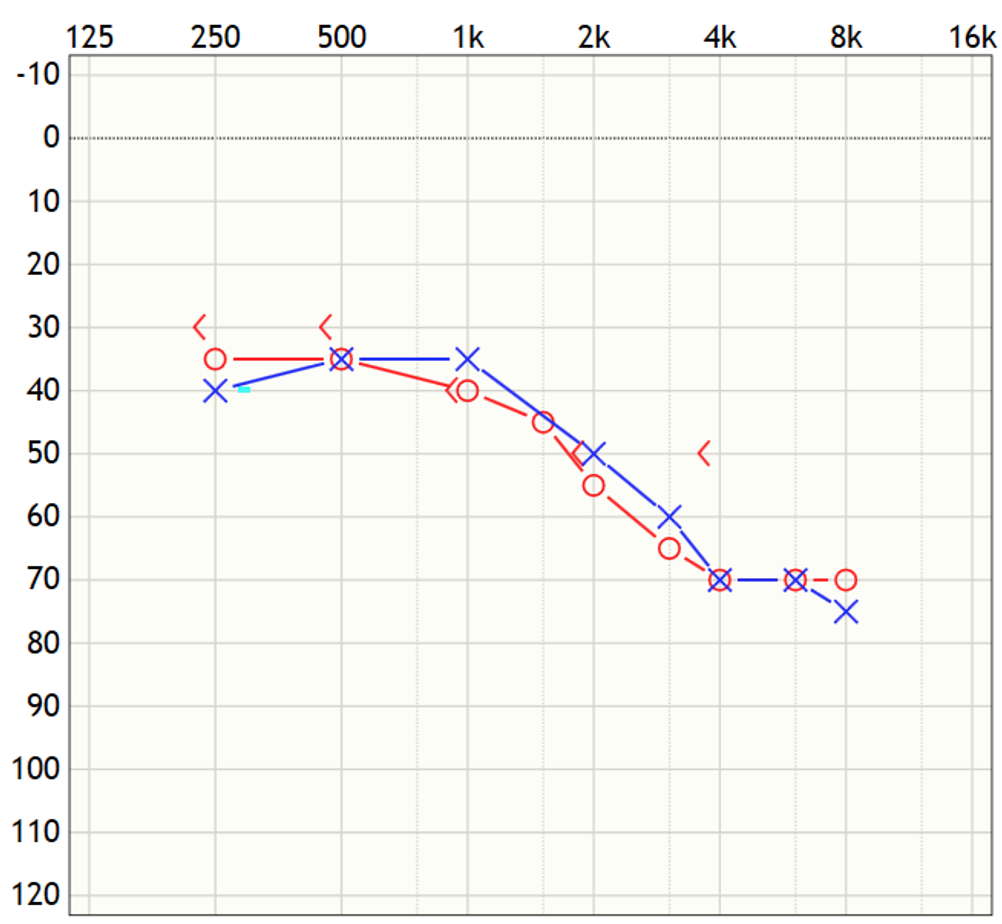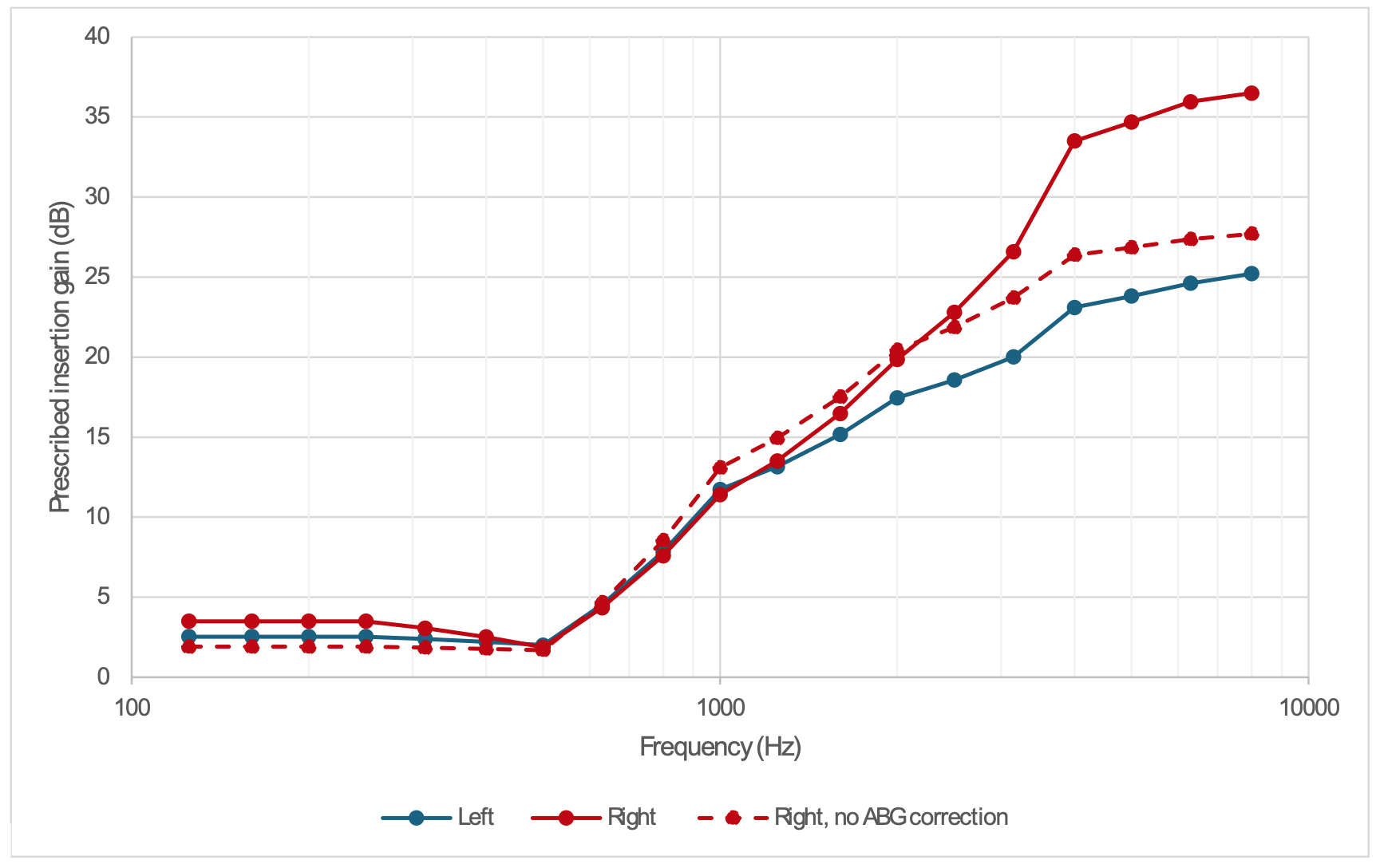Should I Apply An Air-Bone Gap Correction As Default When Fitting Air Conduction Hearing Aids?
Applying corrections for Air-Bone-Gap (ABG) when fitting air-conduction hearing aids is included in many generic and proprietary fitting prescriptions. The audiologist can typically choose whether to apply them. The corrections apply a portion of the difference between the air conduction and bone conduction hearing threshold levels to the gains otherwise prescribed for the portion of the hearing loss considered to be sensorineural in origin. Because prescription hearing aids are fit and verified via PC software modules, the choice of whether to apply ABG corrections is usually a default setting that may be somewhat hidden and, as a result, not often changed.
Although applying ABG corrections in gain prescriptions is common practice, surprisingly little research supports it, with virtually all of it being conducted with linear amplification. The recommendation to compensate for ABG stems from the seminal study by Lybarger (1963), which revealed that hearing aid users tended to adjust their hearing aid volume to half of their air conduction hearing threshold levels. It was further observed that those with mixed and conductive losses preferred a volume that was an additional ¼ higher. This observation has since flowed into gain prescriptions without much further scrutiny.
Why might an audiologist not want to just leave this correction on for everyone? For one thing, it probably only is relevant for well under half of the people being fit with hearing aids, at least in North America (Margolis & Saly, 2008). Another consideration is that corrections for ABG in fitting today’s hearing aid technology (or even yesterday’s for that matter) simply are not validated clinically. Johnson & Dillon (2011) and Johnson (2013) also pointed out some technical issues with how much compensation is applied that could result in excessive output. That issue echoes how the forthcoming NAL-NL3 formula will treat ABG compensation. In developing the update to the now 15-year-old NAL-NL2 prescription, the authors gathered input from clinicians internationally regarding their fitting experiences. Regarding hearing loss with a conductive component, a common issue was reportedly unacceptably high gain because of ABG corrections. NAL-NL3 will thus have lower ABG corrections (Edwards & Kitterick, 2025).
Finally, numerous practical issues can lead to unwanted, unpredictable, and sometimes downright bizarre prescriptions when ABG compensation is indiscriminately applied. Mostly, these occur because hearing aid fitting software and/or the fitting rule itself does not have any clinical judgment about when it makes sense to apply ABG corrections and how to interpret the available data correctly. Some common issues that can occur include:
- Excessive high frequency gain due to 4kHz floating BC thresholds (Margolis et al, 2013).
- Asymmetric gains due to ears being considered individually in fitting software (e.g. if only “best ear” BC thresholds are entered).
- Additional gain prescribed for ABGs 15 dB or less that are negligible in hearing aid fitting.
- Interpolation and extrapolation of BC thresholds to frequencies not measured can result in very odd prescriptions.


Considering all this, it makes most sense for audiologists to turn off default ABG corrections in their fitting software modules and use their clinical judgment to apply them to individual hearing aid users.
References
- Edwards, B. & Kitterick P. (2025). NAL-NL3: The next generation hearing aid fitting system. Paper presented at American Academy of Audiology Hear Tech conference, New Orleans, Louisianna.
- Johnson, E. E. (2013). Prescriptive amplification recommendations for hearing losses with a conductive component and their impact on the required maximum power output: an update with accompanying clinical explanation. Journal of the American Academy of Audiology, 24(06), 452-460.
- Johnson, E. E., & Dillon, H. (2011). A comparison of gain for adults from generic hearing aid prescriptive methods: impacts on predicted loudness, frequency bandwidth, and speech intelligibility. Journal of the American Academy of Audiology, 22(07), 441-459.
- Lybarger S. (1963) Simplified Fitting System for Hearing Aids. Canton, PA: Radioear.
- Margolis, R. H., Eikelboom, R. H., Johnson, C., Ginter, S. M., Swanepoel, D. W., & Moore, B. C. (2013). False air-bone gaps at 4 kHz in listeners with normal hearing and sensorineural hearing loss. International Journal of Audiology, 52(8), 526-532.
- Margolis, R. H., & Saly, G. L. (2008). Distribution of hearing loss characteristics in a clinical population. Ear and Hearing, 29(4), 524-532.

